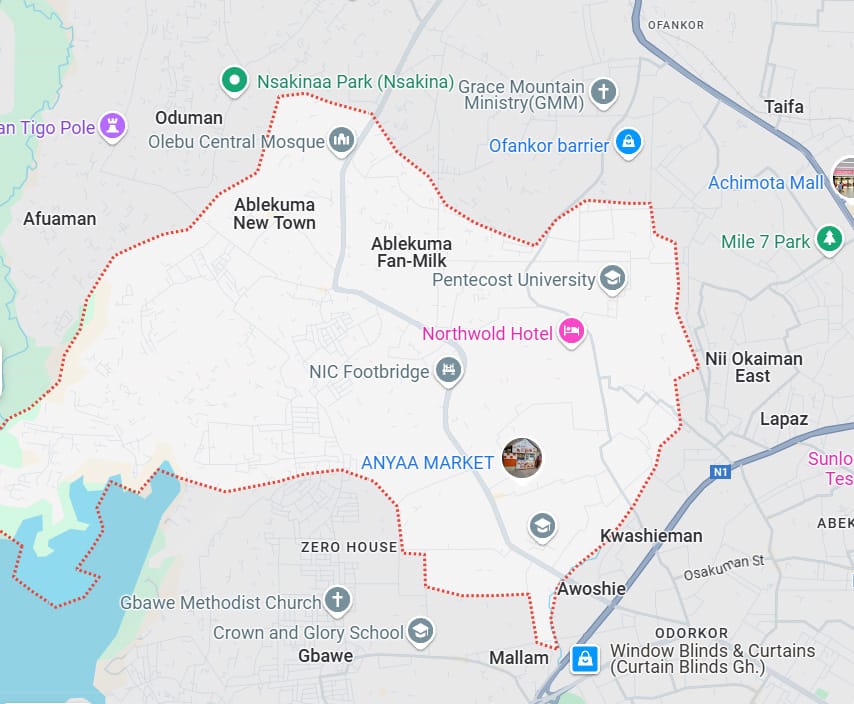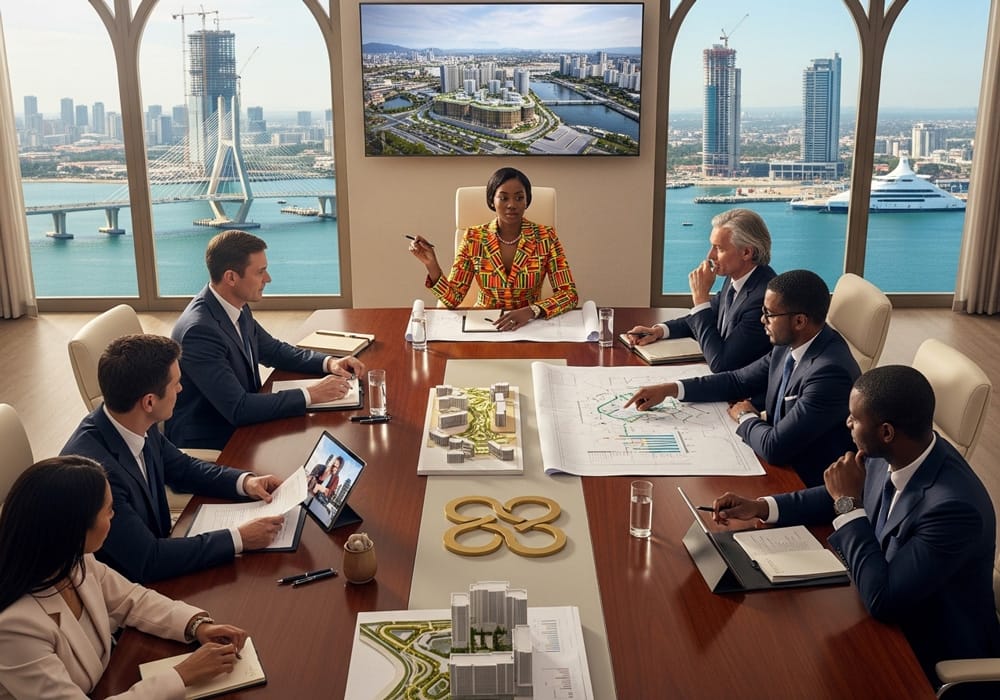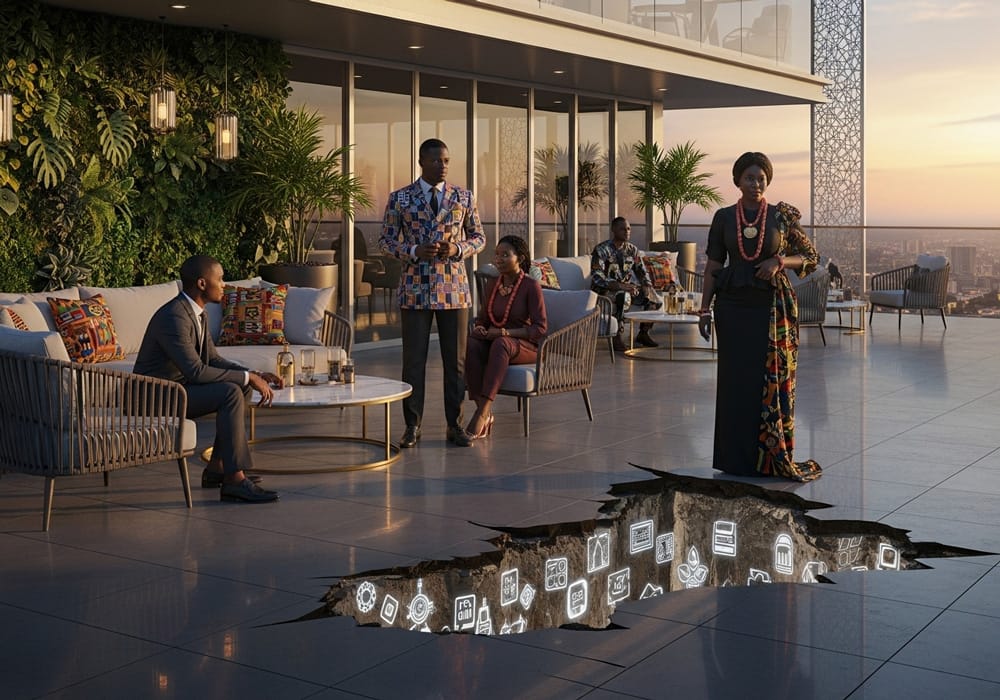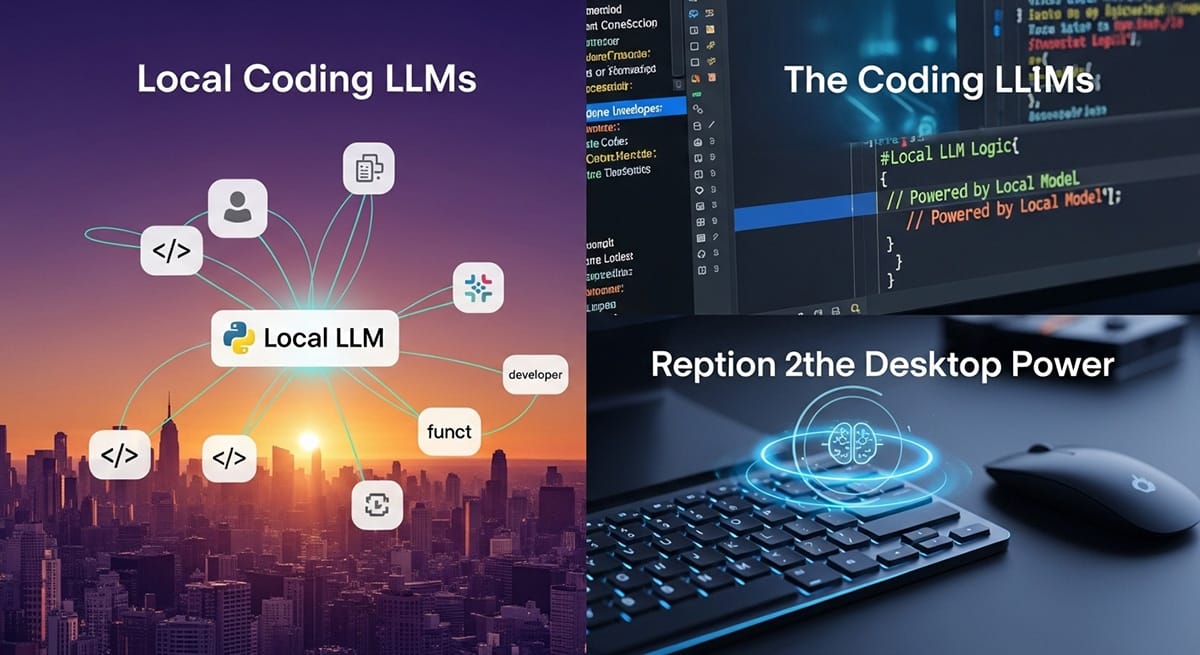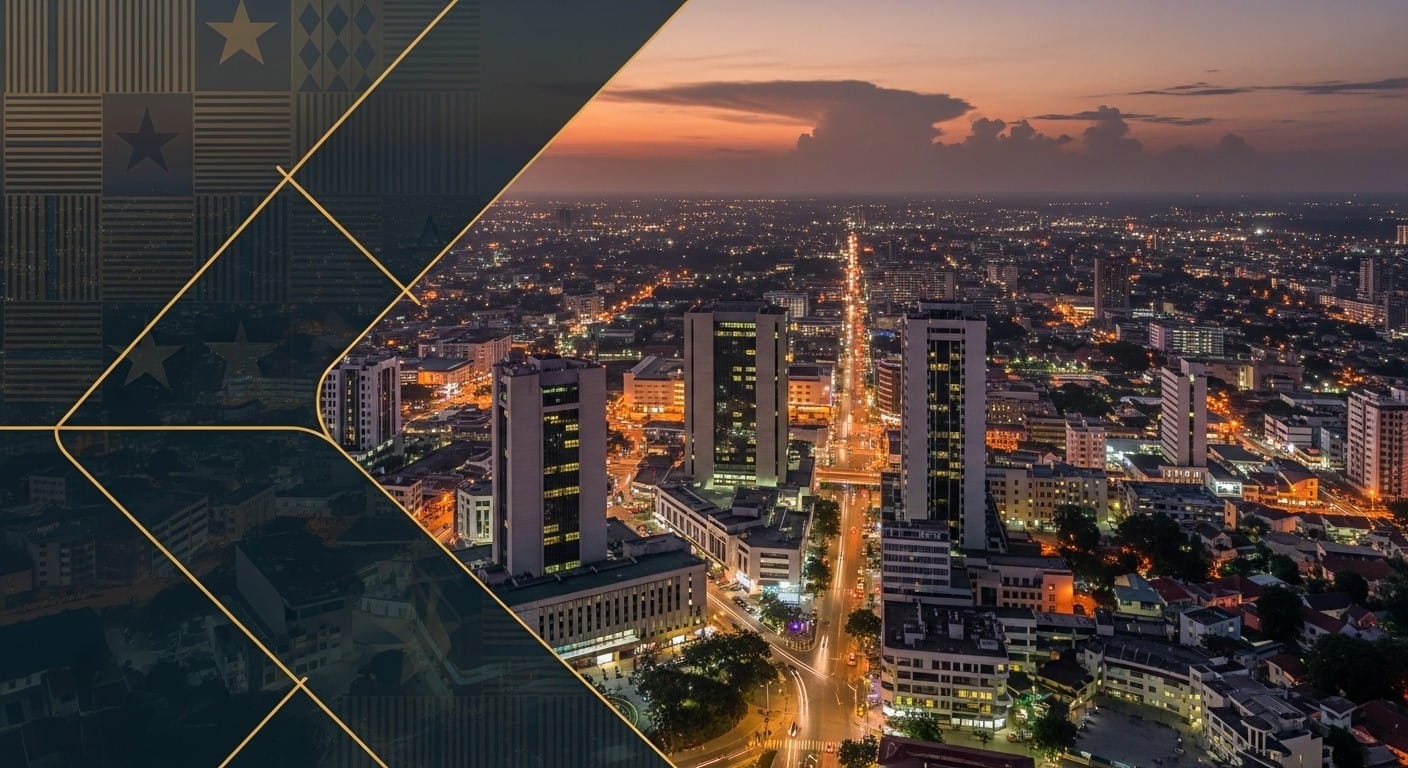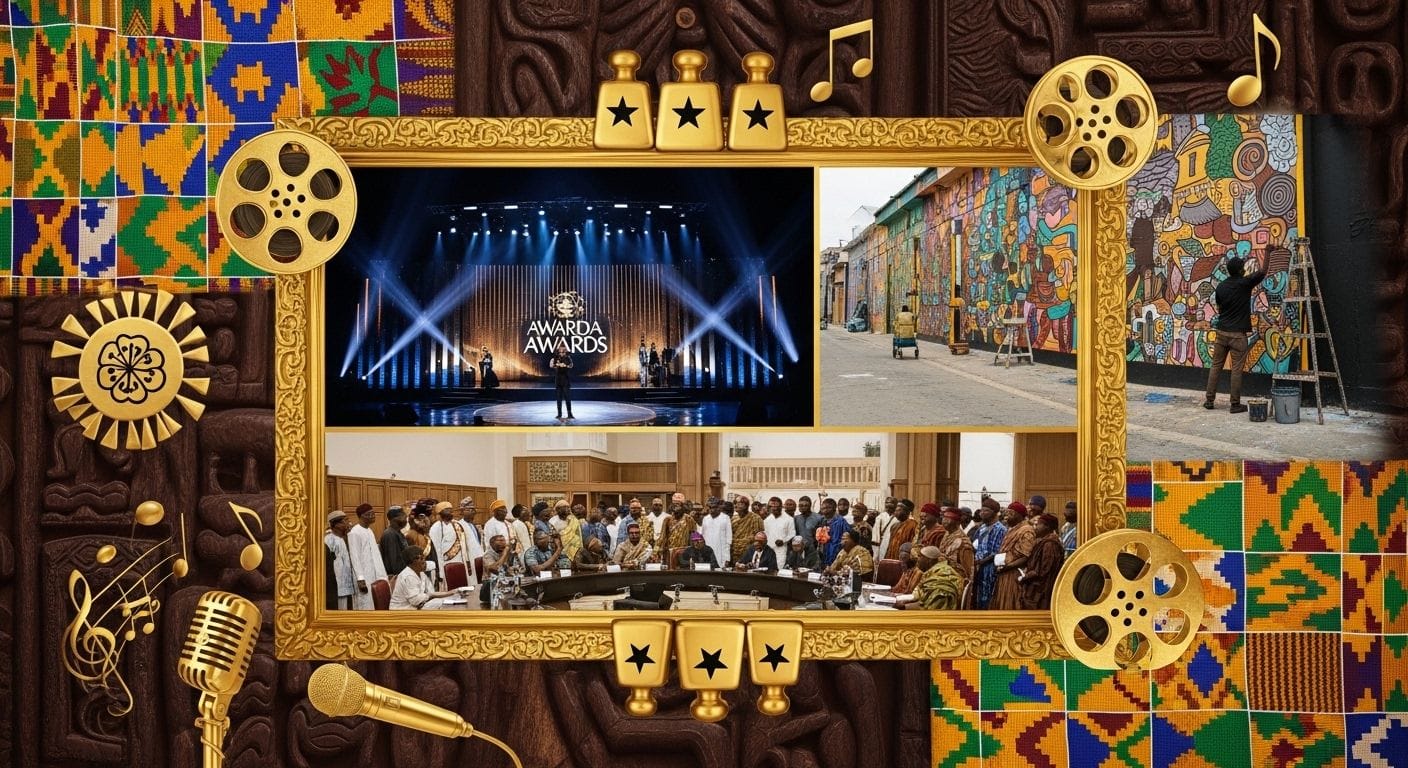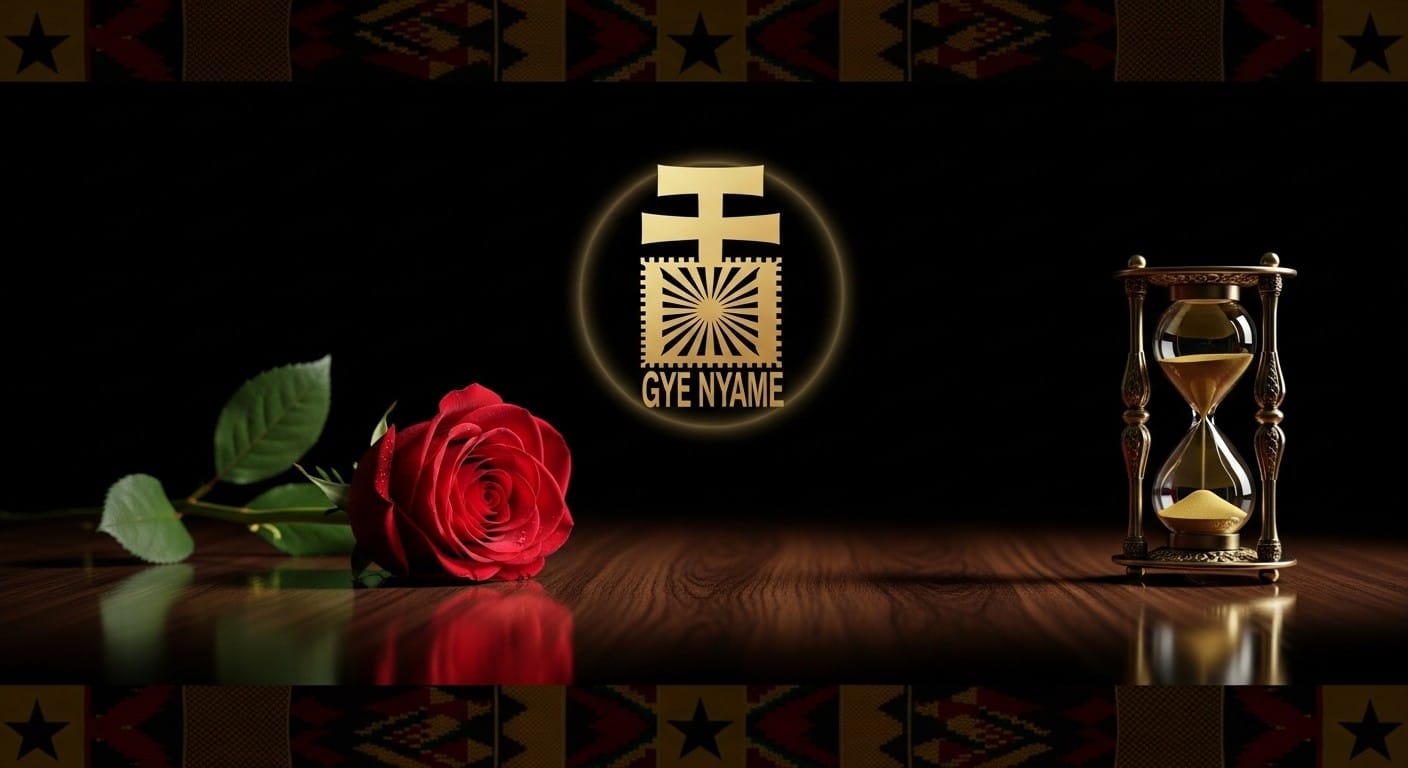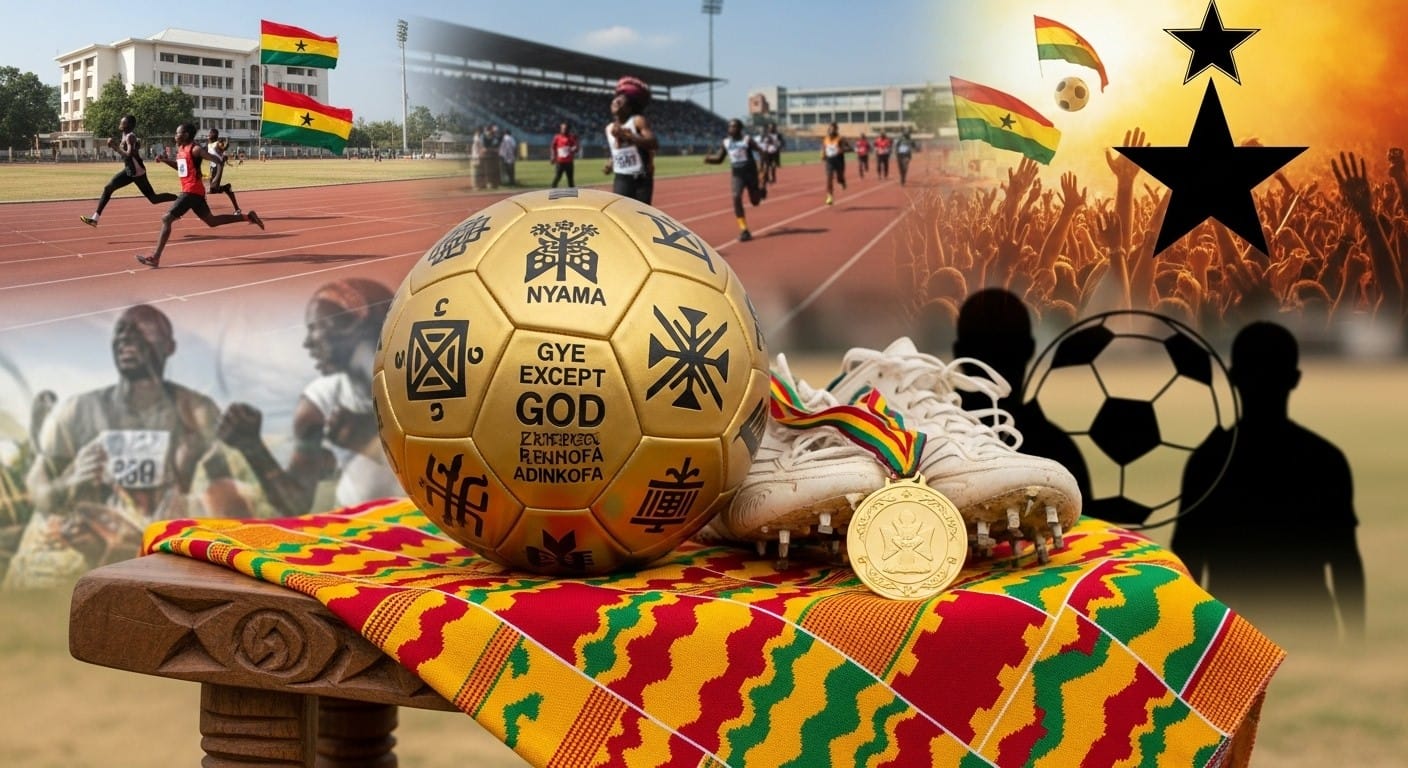Here’s a briefing document compiled from the provided sources regarding the Ga Central Ga Central Municipal Assembly:
Briefing Document: Ga Central Municipal Assembly
Introduction: This document provides a summary of key information regarding the Ga Central Municipal Assembly, drawing from various sources including Wikipedia, government budget documents, statistical reports, and progress assessments. The aim is to present a consolidated overview of the municipality’s demographics, economy, development objectives, and budgetary allocations.
Podcast
1. Demographics and Geography
- Population: The 2010 census recorded a population of 117,220 (57,321 males, 59,899 females). Current population (based on Ghana Statistical Service data) is 144,521.
- Location & Boundaries: Ga Central is bordered by Okaikoi North (South), Ga North (East and North), and Weija-Gbawe Municipal Assembly (West).
- Area: Covers an area of approximately 49 sq km.
- Settlement Patterns: “Major towns are concentrated at the south-eastern part of Municipality. Major towns found here include Kwashiebu, Santa Maria, Tabora, Chantan, Sowutuom, A-Lang, Auntie Aku and part of Awoshie.” The Western part has dispersed settlements, including Ablekuma, Gonse, Anyaa, Agape and CP.
- Key Institutions: The municipality is home to several institutions, including Odorgonno SHS, Pentecost University College, Maranatha University, Roman Catholic Seminary, Municipal Clinic, Agbeve Herbal Hospital, and Deseret Hospital.
- Literacy: Literacy rates vary by age and sex. Literacy data from the 2010 census indicates literacy in English and Ghanaian languages. For example, in the 25-29 age group, 34% of males are literate in English and Ghanaian languages, while the corresponding figure for females is 20.6%.
2. Economy and Climate
- Climate: Falls within the coastal savannah agro-ecological zone. February and March are the hottest months. “Rainfall pattern is bi-modal with the average annual temperatures ranging between 25.1oc in August and 35oc in February through to June.”
- Soil: Coastal Savannah Ochrosols; suitable for coconut and shallots cultivation.
- Dominant Economic Activities: Agriculture, trading and commerce (including retail and wholesale), manufacturing, and services. Specific examples mentioned include residential accommodation, hairdressing, dressmaking, fitting shops, and the transport industry.
- Financial Services: First Bank of Nigeria (FBN), GN Bank, and the Beige Capital Savings & Loans Company are present in the Municipality.
3. Development Objectives and Budgetary Information
- Policy Objectives Linked to SDGs: The 2019 budget document mentions policy objectives linked to Sustainable Development Goals (SDGs).
- Key Achievements (2018): The 2019 budget includes a summary of key achievements from the previous year.
- Budget Allocation (2019): The grand total budget was ¢25,500,000. Revenue sources include:
- Central Government – GOG Paid Salaries: ¢4,646,400.00
- DACF – Assembly: ¢10,939,450.00
- DACF – MP: ¢250,000.00
- Other Donors Support Transfers: ¢4,575,000.00
- Internally Generated Funds (IGF) from property income, sales of goods and services, and fines. This includes fees for licenses (liquor, baker, artisan, fuel dealer, lotto operator, etc.), building permits, markets, and penalties.
- Budget Allocation (2023): The grand total budget was ¢18,108,172. Revenue sources include:
- From foreign governments(Current) 13,718,172.00
- Central Government – GOG Paid Salaries 5,181,000.00
- DACF – Assembly 6,070,000.00
- DACF – MP 400,000.00
- Other Donors Support Transfers 533,172.00
- Programmes: Key programmes and sub-programmes with budgetary allocations include:
- Infrastructure Delivery and Management, focusing on urban roads, spatial planning and public works.
- Economic Development, primarily through agricultural services.
- Environmental Management, including disaster prevention and sanitation.
- Social Services Delivery, covering education, health, and social welfare.
- Specific Objectives and Expenditure Examples:Develop efficient land administration and management system: Budget allocation for “Operational Enhancement Expenses”.
- Improve water quality by reducing pollution: Allocation for Seminars/Conferences/Workshops/Meetings expenses.
- Enhance inclusive urbanization & capacity for settlement planning: allocation for Administrative and Technical Meetings
- Enhance business enabling environment: Allocation for local travel cost.
- SDG Alignment: Budget allocations show efforts to support various SDGs, including:
- “Universal access to safe drinking water by 2030.”
- “Improve water quality by reducing pollution, dumping and hazardous chemicals.”
- “Strengthen nat. & reg. plan thru supportive positive econ. soc. & env. links”
- Double agriculture productivity & incomes of small scale food producers for value addition
4. Housing and Amenities (2010 Census Data):
- Housing Stock: Data on the stock of houses and households is available, indicating ownership status, type of dwelling, and construction materials.
- Construction Materials: The main construction material for outer walls is cement/concrete (79.8%). Main Material for roofing is metal sheets (83.9%).
- Sleeping Rooms: A significant proportion of households occupy one room (57.3%).
- Utilities: Information available regarding the main source of lighting (electricity), cooking fuel (gas), and water (sachet water is highly used)
- Sanitation: Data regarding bathing and toilet facilities, and solid/liquid waste disposal methods are available.
5. Key Acronyms (from NDPC Progress Report):
- MHMT: Municipal Health Management Team
- MIO: Municipal Information Officer
- MoFA: Ministry of Food and Agriculture
- MoF: Ministry of Finance
- MPCU: Municipal Planning and Coordinating Unit
- MTDP: Medium Term Development Agenda
- NADMO: National Disaster Management Organisation
- NCCE: National Commission for Civic Education
- NDPC: National Development Planning Commission
- WAAPP: West Africa Agricultural Productivity Programme
Gaps and Further Research:
- More recent comprehensive data on employment sectors would provide a clearer picture of the current economic landscape.
- Specific details about the “key achievements in 2018” mentioned in the 2019 budget document would be beneficial.
- A detailed breakdown of how “Other Donors Support Transfers” are allocated would be useful.
- A longitudinal study comparing census and budgetary data across multiple years would highlight trends in development and resource allocation.
Ga Central Municipal Assembly: A Comprehensive Study Guide
I. Core Concepts and Themes
- Location and Boundaries: Understand the geographical location of the Ga Central Municipal Assembly, including its bordering districts (Okaikoi North, Ga North, and Weija-Gbawe).
- Population Dynamics: Analyse the population size, sex ratio, and demographic trends of the assembly, noting changes between the 2010 census and later estimates. Consider how population density might vary across the municipality.
- Economic Activities: Identify the main economic activities within the assembly, including formal and informal sectors. Explore the role of agriculture (coastal savannah ochrosols) and the presence of financial institutions.
- Sustainable Development Goals (SDGs): Review the policy objectives of the Ga Central Municipal Assembly as they relate to the SDGs. Pay attention to specific targets, such as access to potable water and sanitation.
- Budget Allocation: Examine the assembly’s revenue sources and expenditure allocations, including funding from central government, DACF, donors, and internally generated funds (IGF).
- Infrastructure: Assess the focus on infrastructure delivery and management, particularly concerning transport, spatial planning, and public works. Note any specific projects like road construction or street naming.
- Social Services: Understand the assembly’s role in delivering social services, including education, health, social welfare, and environmental health.
- Environmental Management: Analyse the assembly’s efforts in disaster prevention, waste management, and overall environmental sustainability.
- Governance and Administration: Review the structure of the assembly’s administration, including sub-metros, departments, and their respective functions.
- Literacy and Education: Consider the literacy rates and educational attainment levels within the municipality, and any relevant policies.
- Housing and Utilities: Analyse the types of dwellings, construction materials, access to utilities (water, lighting, cooking fuel), and sanitation facilities within the assembly.
II. Quiz: Short-Answer Questions
- What are the districts that border the Ga Central Municipal Assembly?
- According to the 2010 census, what was the approximate population of the Ga Central Municipal Assembly, and what was the sex ratio?
- Describe the climate of the Ga Central Municipal Assembly and how it supports certain agricultural activities.
- Name three major towns/settlements located in the south-eastern part of the Ga Central Municipality.
- What are some of the major revenue streams for the Ga Central Municipal Assembly, according to the 2023 budget?
- What are some of the key policy objectives of the Ga Central Municipal Assembly that are linked to Sustainable Development Goals (SDGs)?
- What are the main vegetation types and soil composition found in the Ga Central Municipal Assembly?
- What are some of the infrastructure projects planned or underway in the Ga Central Municipal Assembly?
- Name at least three different types of licences for sales of goods and services that can be obtained in the Ga Central Municipal Assembly.
- Describe the common methods of solid and liquid waste disposal employed by households within the Ga Central Municipal Assembly, based on the 2010 census data.
Quiz Answer Key:
- The Ga Central Municipal Assembly is bordered by Okaikoi North to the South, Ga North to the East and North, and Weija-Gbawe Municipal Assembly to the West.
- The 2010 census reported a population of approximately 117,220, with 57,321 males and 59,899 females.
- The municipality has a coastal savannah climate with high temperatures throughout the year and a bi-modal rainfall pattern. These conditions support the cultivation of crops like coconut and shallots in certain areas.
- Major towns in the south-eastern part include Kwashiebu, Santa Maria, Tabora, Chantan, Sowutuom, A-Lang, Auntie Aku, and part of Awoshie.
- Key revenue streams for the assembly include funds from foreign governments, central government grants (GOG Paid Salaries, DACF), other donor support transfers, stool land revenue, and sales of goods and services licenses.
- The Ga Central Municipal Assembly policy objectives linked to SDGs include the improvement of potable water access, reduction of pollution, the implementation of an efficient land administration and management system, and a support for SDG implementation.
- The municipality features shrub lands and grassland vegetation, with Coastal Savannah Ochrosols as the main soil type. The soils in the municipality are mainly pale and sandy.
- Infrastructure projects include road transport infrastructure improvements, land acquisition and registration, street naming, and the construction and maintenance of traffic lights.
- Examples include licenses for Pito/Palm Wine Sellers, Chop Bars, Liquor, Bakers, Artisans/Self Employed, Sand and Stone Contractors, Fuel Dealers, Lotto Operators, and Hotel/Night Club, as well as many others.
- According to the 2010 Population and Housing Census, the main methods of solid waste disposal included burning by households, public dumps (containers and open spaces), indiscriminate dumping, and burial by households, and main method of liquid waste disposal was through a drainage system into a gutter.
III. Essay Questions
- Assess the economic development strategies of the Ga Central Municipal Assembly, considering its revenue sources, expenditure allocations, and alignment with national development goals.
- Evaluate the effectiveness of the Ga Central Municipal Assembly’s efforts to achieve Sustainable Development Goals (SDGs) related to water, sanitation, and environmental sustainability.
- Analyse the demographic profile of the Ga Central Municipal Assembly, examining how population size, distribution, and socio-economic characteristics influence the delivery of social services.
- Discuss the challenges and opportunities facing the Ga Central Municipal Assembly in providing adequate infrastructure and managing urban development within its geographical boundaries.
- Critically examine the role of the Ga Central Municipal Assembly in promoting good governance, citizen participation, and local economic development within the municipality.
IV. Glossary of Key Terms
- DACF (District Assemblies Common Fund): A fund allocated by the central government to District Assemblies for development projects.
- GOG (Government of Ghana): Refers to the central government of Ghana.
- IGF (Internally Generated Funds): Revenue collected by the Municipal Assembly from various sources within its jurisdiction.
- SDGs (Sustainable Development Goals): A set of global goals adopted by the United Nations to achieve a better and more sustainable future for all.
- Coastal Savannah Ochrosols: The main soil type in the Ga Central Municipal Assembly, found in the coastal savannah agro-ecological zone.
- MMDA (Metropolitan, Municipal and District Assemblies): The local government authorities in Ghana responsible for local administration and development.
- ABFA: Annual Budget Funding Amount
- Stool Land Revenue: Revenue generated from land controlled by traditional authorities (stools).
- Non-Financial Assets: Tangible assets such as fixed assets, road signals, and infrastructure.
- Spatial Planning: The process of regulating and managing the use of land to achieve desired environmental, social, and economic outcomes.
- Bimodal Rainfall: A rainfall pattern with two distinct wet seasons separated by drier periods.
- Crude Birth Rate: The number of live births occurring among the population of a given geographical area during a given year, per 1,000 mid-year total population of the given geographical area.
- Total Fertility Rate: The average number of children that would be born to a woman over her lifetime if she were to experience the exact current age-specific fertility rates through her lifetime, and survive from birth through the end of her reproductive life.
- General Fertility Rate: The number of live births occurring among women of reproductive age (15-49 years) in a given geographical area during a given year, per 1,000 women of reproductive age.
Here is an 8-question FAQ that addresses the main themes and ideas present in the provided sources regarding the Ga Central Municipal Assembly:
FAQ on Ga Central Municipal Assembly
- What is the geographical location and area of the Ga Central Municipal Assembly?
- The Ga Central Municipal Assembly is located in the Greater Accra Region and shares boundaries with Okaikoi North to the South, Ga North to the East and North, and Weija-Gbawe Municipal Assembly to the West. The assembly covers an area of approximately 49 square kilometres. The south-eastern part has the most concentrated towns, including Kwashiebu, Santa Maria, Tabora, and parts of Awoshie.
- What is the population of the Ga Central Municipal Assembly?
- According to the 2010 census, the population of Ga Central was 117,220, consisting of 57,321 males and 59,899 females. Current data from the Ghana Statistical Service indicates a population of 144,521.
- What are the main sources of revenue for the Ga Central Municipal Assembly?
- The main revenue sources include funds from foreign governments, Central Government (GOG) paid salaries, DACF (District Assemblies Common Fund) for both the Assembly and Members of Parliament (MP), other donor support transfers, goods and services from decentralised departments, DDF (District Development Fund) capacity building grants, District Development Facility, property income (including property rates and stool land revenue), and sales of goods and services such as licenses (for businesses like chop bars, liquor vendors, bakers, artisans, sand and stone contractors, fuel dealers, and more). Additional income is derived from building permits, markets, livestock, and various fees and fines.
- What are the key policy objectives and Sustainable Development Goals (SDGs) that the Ga Central Municipal Assembly is focused on?
- The Ga Central Municipal Assembly is focused on several policy objectives linked to the Sustainable Development Goals (SDGs). These include improving access to potable water, improving water quality by reducing pollution, strengthening domestic resource mobilisation, developing efficient land administration and management systems, strengthening national and regional planning, improving road transport infrastructure, deepening democratic governance, and enhancing human capital development. They aim to achieve universal access to safe drinking water by 2030 and to enhance inclusive urbanisation and capacity for settlement planning. They’re also focused on doubling agricultural productivity and incomes for small-scale food producers and value addition.
- What are the main economic activities in the Ga Central Municipal Assembly?
- The municipality’s economy is diverse, with a significant portion of the population engaged in the service sector. This includes retail and wholesale trading, general merchandising, residential accommodation, hairdressing, dressmaking, fitting shops, and the transport industry. The presence of financial institutions like First Bank of Nigeria (FBN), GN Bank, and the Beige Capital Savings & Loans Company provides access to financial services. The municipality also falls within the coastal savannah agro-ecological zone, making agriculture, especially coconut and shallot cultivation, another important economic activity.
- How does the Ga Central Municipal Assembly manage waste disposal and sanitation?
- The assembly addresses both solid and liquid waste disposal. Common methods of solid waste disposal include burning by households, public dumps (both containerised and open spaces), indiscriminate dumping, and burial by households. Liquid waste is often managed through the sewerage system where available, drainage systems into gutters, or drainage into soak-away pits. A significant percentage of households use KVIPs (Kumasi Ventilated Improved Pit latrines) as toilet facilities. Refuse collection and environmental sanitation management are also key aspects of Waste management in the municipality.
- What is the state of housing and access to utilities within the Ga Central Municipal Assembly?
- A significant proportion of households in the municipality reside in dwellings owned by a household member. The main construction materials for outer walls are cement/concrete blocks or mud bricks/earth. Roofing materials commonly include corrugated metal sheets. Access to utilities varies, with electricity being the main source of lighting for most households. However, a substantial number rely on sachet water for drinking, reflecting challenges in accessing potable water.
- What are some of the key expenditure areas and programmes being implemented by the Ga Central Municipal Assembly?
- Key expenditure areas include management and administration, social services delivery (covering education, youth, sports, health, social welfare, and community development), infrastructure delivery and management (including urban roads, physical planning, and public works), and economic development (focused on agriculture, trade, and tourism). Programmes implemented focus on areas like environmental health and sanitation, disaster prevention and management, spatial planning, and agricultural extension services. The assembly allocates funds for compensation of employees, use of goods and services, and non-financial assets to support these programmes.
Podcast Transcript
So we’re diving into, life as an expat or a visitor in God Central Municipal Assembly. GCMA. GCMA in Ghana. Right. And we’ve got reports and data here to help, kind of navigate this area just outside Accra.
Yeah. And what’s really fascinating is how quickly it’s transforming. You know, less than 20% of residents work in agriculture. Oh, wow. So that tells you right away, this isn’t your typical sort of rural Ghanaian community.
Right. It’s becoming a hub. Yeah. And that has implications for, you know, housing lifestyle, even the social scene. Yeah.
I mean, anyone considering a move should know that GCMA was actually officially established in June 2012 Oh, wow. Carved out of the larger Got South Municipal Assembly. So it’s relatively young. Yeah. So geographically, it’s about 49 square kilometers Okay.
Bordered by some key areas, Okaikoi North, Ganhof, Wojejibawi. Mhmm. You can think of it as like a suburb in the making, but with its own distinct character. So imagine you’ve just arrived in GCMA. One of the first things you’ll probably notice is that entrepreneurial energy.
Oh, yeah. There’s tons of small businesses, dress making, hairdressing, retail shops. It’s bustling. And don’t forget the provision shops. Provision shop.
You’ll find them all over GCMA, selling a bit of everything. They’re like mini supermarkets essential for daily life. That’s interesting. The reports also highlight that, you know, a large percentage of households in GCMA are led by women. Right.
And single parenthood being more common than in some other areas. Yeah. That’s significant. You’ll find a really strong network of women Okay. Supporting each other both socially economically, and that could be particularly valuable for, you know Right.
Single parents or female entrepreneurs looking to connect. Now education is often a top concern for expats and families. Right. GCMA has a surprising mix of public and private schools. Yeah.
38 public schools squeezed into just 14 buildings Wow. Compared to over 558 private schools. Wow. That’s a huge disparity. And that data on private schools might be an undercount.
Yeah. So that’s something to consider. Yeah. In public schools, you can expect large class sizes, you know, sometimes 55 to 70 kids per class. Oh, wow.
While the basic education certificate examination or the b, that’s like Ghana’s high school exit exam Right. Has an eighty one point three percent passing rate overall. Okay. Private schools consistently outperform public ones. So for families relocating, choosing the right school is crucial, you know, for their children’s future.
Right. That private school advantage in GCMA is something to weigh carefully. Yeah. Even if it comes at a cost. Even if it comes at a cost.
Speaking of cost Yeah. Let’s talk about health care. Okay. GCMA has two public clinics Okay. Two basic community based health planning and services compounds Mhmm.
But these are often stretched thin. Yeah. Many residents rely on private health care, which can get expensive. Yeah. There are 21 private facilities, including hospitals, maternity homes, and even herbal clinics wow.
Which are quite popular due to the high cost of conventional options. This highlights the importance of having, you know, comprehensive health insurance Right. If you’re living in GCMA. Yeah. And it might be worth exploring alternative health care options like the herbal clinics.
Yeah. Just be sure to do your research beforehand. Good advice. Now let’s get into some practical aspects of daily life in GCMA. Okay.
Piped water, for example, is notoriously unreliable. Yeah. You’ll likely need to rely on water tankers, which are pricey, and the water quality can be inconsistent. Oh, wow. It’s definitely a factor to consider when thinking about your budget and lifestyle.
Yeah. And here’s a major challenge. There are no official waste disposal sites in GCMA. Imagine the logistical hurdles Right. And potential environmental impact.
Wow. This means that waste management is often handled informally Yep. Which raises concerns about sanitation and sustainability. Yeah. Definitely a lot to consider there.
For sure. And getting around GCMA can be a little tricky. Out of 400 kilometers of roads, only 23 kilometers are paved. Wow. That’s, that’s quite a difference.
Yeah. So owning a car is almost essential or becoming very familiar with ride hailing apps. Right. Public transportation exists, but it might not be as reliable for all your daily needs. Yeah.
Especially if you’re used to a different level of infrastructure. Exactly. Sounds like flexibility and a little bit of patience are key. Yeah. Speaking of adapting the food situation in GCMA is interesting.
Okay. Arable land is being squeezed by development, so you won’t see these vivis farms. Right. So backyard gardening is encouraged, but livestock rearing chickens, pigs, rabbits, that’s more common due to limited space. Okay.
You’ll find some maize and cassava production in the outer areas, but it’s not enough to feed the entire municipality. So where do most people get their food? Well, you’ll find both modern supermarkets in certain areas, but the real heart of the food scene is in the local markets. Oh. Market, for example.
Okay. It’s a must visit. It’s one of the largest in GCMA I’ve imagined. Sensory overload in the best possible way. What about traditional Ghanaian cuisine?
Will I find that easily in GCMA? Absolutely. Food vendors are everywhere. You know? Okay.
You’ll get to sample authentic dishes like sofu, banquo, and keenki. Yeah. But GCMA is a melting pot of different ethnic groups, so you’ll also find influences from other regions of Ghana and beyond. That culinary diversity sounds amazing. It is.
Now we can’t talk about Ghana without mentioning festivals. I know the Homoe O Festival is big in the Ghat region. What’s it like in GCMA? Yeah. So Hommo o literally means hooting at hunger.
Interesting. It is celebrated in GCMA, but not as intensely as in some other GATT areas. Okay. The diverse population means you’ll experience a blend of traditions Right. Might make for some unique events and celebrations throughout the year.
That’s something for visitors to keep in mind. It’s not like this monolithic cultural experience. Right. It could be exciting. Yeah.
Now shifting gears a bit, let’s talk about safety and security in GCMA. What should expats and visitors be aware of? Generally, GCMA is considered safe. But like any urban area, it’s important to be aware of your surroundings Right. And take common sense precautions.
Petty theft can be an issue, especially in crowded areas like markets. So just being mindful of your belongings Exactly. Especially valuables Yeah. Is key. What about health care safety?
Are there any specific health concerns expats should be prepared for? Yeah. Malaria is prevalent in Ghana, so taking precautions like using mosquito nets and repellents is crucial. Okay. It’s also a good idea to consult with a travel doctor about recommended vaccinations and any necessary preventative medications.
Access to quality health care is something we’ve already discussed, but it’s worth emphasizing again having a reliable health insurance plan that covers both emergency and routine care is nonnegotiable. Absolutely. And don’t forget to pack any essential medications you regularly take. Right. Finding specific brands or equivalents might be challenging in GCMA, so it’s best to be prepared.
Now for those looking beyond just visiting, what about long term stay options? Is finding housing in GCMA difficult? Well, the rapid urbanization is putting a strain on the housing market, so finding suitable accommodation can be competitive Okay. Especially for expats. Yeah.
You’ll find a mix of apartments, houses, even gated communities, but prices can vary widely depending on location and amenities. So starting housing search early and working with reputable real estate agents are probably good strategies. Absolutely. And be prepared to negotiate. Right.
Understanding the local rental market and having a clear budget in mind will help you find the right place for your needs. Now beyond the practicalities, what about the social scene in GCMA? Is it easy for expats to connect with others and build a community? GCMA has a very welcoming atmosphere, and Ghanaians are known for their hospitality. You’ll find opportunities to connect with both locals and other expats through various social groups and activities.
Are there any specific places or events that are particularly expat friendly? Well, there are several international schools in and around GTMA, which often serve as hubs for expat families. Yep. Churches and social clubs are also great places to meet people. Okay.
And for those interested in sports, there are various clubs and groups for activities like football, tennis, and golf. It sounds like there are plenty of options for socializing and finding your niche. Now for those who might be considering GCMA not just as a place to live but also as a place to invest, what are the key sectors to watch? Well, GCNA presents this unique blend of challenges and opportunities for investors. Yeah.
The rapid urbanization, the growing population, the entrepreneurial spirit, they create a dynamic market with significant potential. What are some specific areas that stand out as particularly promising? Real estate is an obvious one. Okay. The demand for housing, especially for middle income and expat communities, is outstripping supply.
Right. So this creates opportunities for developers and investors willing to navigate the complexities of land acquisition and construction. And beyond housing, are there other sectors that are attracting investment? Absolutely. The growth of the informal economy is fueling demand for commercial spaces such as shops, restaurants, and service oriented businesses.
So for someone interested in tapping into that entrepreneurial energy, there are options beyond just large scale development projects. Exactly. And let’s not forget the potential in agriculture, particularly with innovative urban farming techniques. Right. We mentioned mushroom farming earlier, but there’s also growing interest in hydroponics and vertical farming.
Those are areas where investors with a focus on sustainability and food security could find opportunities. Precisely. And with the government’s focus on developing the greater Accra region, GCMA is well positioned to benefit from infrastructure improvements and economic incentives, which can be attractive for investors. It’s a good reminder that GCMA isn’t isolated. It’s part of a larger economic ecosystem that’s constantly evolving now before we move on.
I’d like to touch on something that might be a bit sensitive but important for expats in diaspora to understand the role of chieftaincy in GCMA. Yeah. That’s a great point. Chieftaincy is deeply rooted in Ghanaian culture, and it plays a significant role in land ownership, dispute resolution, and community development even in urban areas like GCMA. GCMA.
So it’s not just a historical or symbolic institution. It has real world implications. Absolutely. Expats and investors need to be aware of the influence of chiefs and engage with them respectfully. Mhmm.
Understanding the local customs and protocols surrounding chiefency is crucial for navigating business and social interaction. It’s about recognizing and respecting the existing power structures. Exactly. Even if they might be different from what you’re accustomed to. Building relationships with local chiefs can open doors and facilitate smoother operations, whether you’re starting a business, investing in a simply seeking to integrate into the community.
It’s a reminder that cultural sensitivity and awareness are essential for success in any new environment. And speaking of cultural nuances, let’s talk about something that often surprises expats, the concept of time in Ghana. This is something I’ve heard about before. It’s not about being disrespectful of time Right. But rather a different cultural understanding.
Exactly. In GCMA, as in many parts of Ghana, time is often viewed as more flexible and fluid. Okay. Meetings and events might not always start promptly Right. And interruptions are common.
So expats and visitors need to adjust their expectations Yeah. And embrace a more relaxed approach to scheduling? Patience and flexibility are key. Right. It’s about understanding that things might not always happen according to your planned timeline.
Right. And that’s okay. That’s okay. It’s about adapting to the local rhythm of life Exactly. Which can be a rewarding experience in itself.
Absolutely. Wow. We’ve covered so much ground in this deep dive. It’s clear that GCMA is a complex and dynamic place full of opportunities and challenges in equal measure. It really is a microcosm of the larger changes happening across Ghana.
You’ve got rapid urbanization, economic shifts, cultural blending. It’s all playing out right there. And I think what’s valuable for our listeners that we haven’t just presented the official GCMA. We’ve talked about the realities of unreliable water, the housing crunch, even the need to understand chieftaincy. Those nuances are what make the difference between a surface level understanding and truly being prepared for what life in GCMA is actually like.
One theme that really struck me is that entrepreneurial spirit, especially among women. It’s undeniable they’re driving the informal economy, leading households, finding ways to make things work despite limited resources. It’s inspiring. It makes me wonder if they’re already achieving so much, what could be possible with more support that seems like a key takeaway for anyone looking to invest or collaborate in GCMA. Absolutely.
There’s untapped potential there, and it’s not just about handouts. It’s about understanding the existing systems, the challenges these women face, and finding ways to partner effectively. Now before we wrap up, I have to ask from all this information, what really stood out to you? What’s the one thing you’ll remember about GCMA? Honestly, the mushroom farming, it might seem like a small detail, but in a place where land is scarce, it’s such a clever adaptation.
It speaks to the ingenuity of the people. It’s like finding opportunity in the unexpected. It makes you think what other innovations are happening under the radar. Exactly. And that’s the beauty of a deep dive like this.
Sparks curiosity. It gives you a framework, but it also encourages you to go beyond the data and explore the human stories, the unexpected connections. So for you listening, this is just the starting point. We’ve given you the map, but the real adventure begins when you start exploring GCMA for yourself. And as always, the most valuable knowledge comes from connecting the dots from seeing how the different pieces of the puzzle fit together.
So go forth and connect your journey into the heart of GCMA awaits.

